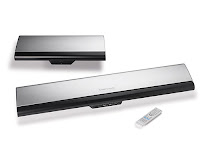
More and more music lovers are transitioning from the regular conventional speakers to wireless speakers. Regular speakers are still popular and there are people who invested a lot of money in conventional speaker boxes and these are still as great as ever But those in tune with music have began to see a limitation with regular speakers. One of them is the unsightly wires that run from the music receiver or tuner to the speakers. If you have a lot of speakers then the wires can form a tangled mess behind the unit and when it comes time to untangle them the whole exercise can become a major headache. Then there is the risk of someone tripping on the wires and hurting themselves not to mention that if there are little children within the vicinity of the wires they can pull them out and interfere with the sound. In some cases, these cables have started fires in houses and apartments. Thus the strong case to transition to wireless speakers.
Wireless speakers are just normal speakers in appearance but rather than use a transmitter cable from the tuner to the speakers, they rely on radio frequency waves in much the same way a radio or a cell phone works. It is not uncommon to see the speakers, the tuner and a third device whose sole purpose is to transmit the signal. This device, called the transmitter, is connected to the tuner via a cable. An amplifier is also used and this is to magnify the signal and boost its quality. The signal transmitter also has a cable running from it to the electrical outlet on the wall. The frequency range for wireless speakers is the same as that of wireless or cordless phones, about 900MHz. The sound can even travel through walls for a distance of up to 300 feet.
One advantage with wireless speakers is that the sound can actually be transmitted through walls. This means that the speakers need not be in the same room as the tuner. For some, this is especially workable in the event that they want speakers in the bathroom or kitchen or even outdoors. Wireless speakers are also ideal in an zone that has small children or animals in that they can be placed out of range where they cannot access them or interfere with the sound.
Wireless speakers are definitely going to be the way people listen to music in the future even though conventional speakers with their wires are still in use in a lot of homes. One downside of wireless speakers is that they are limited in the distance where the frequency signal can reach. Wired speakers can function regardless of their distance from the tuner as long as the cable can reach them. Also, wireless speakers are subject to sound distortion because the signal is transmitted in the air much in the same way that a radio transmits. This means that if there are other wireless devices within the same vicinity the sound quality may suffer.
Theodore provides information about in wall speakers and talk about advantages of in wall speakers on his site.